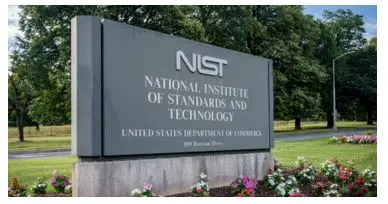

Manufacturers across all industries are looking for technological solutions and enhancements to continue to ensure product reliability and longevity and to maintain competitive advantage. As the digital age blossoms, a full suite of ever-evolving technologies is providing manufacturers with options for new sensing devices, cybersecurity enhancements, adaptive control, and evaluation systems — all backed by industrial artificial intelligence (AI).

As these technologies develop, the United States National Institute for Standards and Technology (NIST) is looking to assist manufacturers with determining the best products for their applications and help developers find the high-fidelity data needed to test and evaluate their products. Access to high-quality, real-world data streams becomes paramount when developing and testing industrial AI technologies or any novel industrial system. While some companies are turning in-house or to consultants to provide solutions, many manufacturers simply do not have the time or resources to invest in these options.
The philosophy of ‘try before you buy’ is very much needed by many facilities. Access to guiding documents and data from these styles of research facilities can provide the assurance and confidence that they are investing their limited resources where they will give the most return.
To that end, NIST has constructed the Collaborative Robotic Operations Workcell (CROW). This benchtop process manufacturing setup represents a collaboration within the Smart Connected Systems Division of the NIST Communications Technology Laboratory. The workcell provides an open-access source of data analogous to live industry work without the concerns of intellectual property (IP) or proprietary information that often limits availability of true industry data.
CROW was developed to have maximum application potential with a robust suite of sensors and digital loggers. This includes digital communications, control systems, product quality, embedded and secondary sensors, material flow, and more. CROW has also been specifically designed to facilitate data capture of interactions between any controlling or observing agent — be they human, computer, or some combination of both.
CROW is a multistage manufacturing operation with the goal of producing and evaluating an endlessly cyclic product stream. Two robotic arms work together to move glass workpieces through marking and erasing stages in a process that is very similar to industrial gasket extrusion or welding. The process will further allow for a fully autonomous ‘lights-out factory’ style operation should requirements expand.
Configurations such as CROW are designed to provide comprehensive, safe environments to design, deploy, and develop these emerging technologies. Data streams and system enhancements can be added and evaluated onto a benchtop setup like CROW without fear of losing time or endangering resources in a full-scale production facility. Examples include:
Monitoring systems for physical asset performance and reliability
Cyber information and network traffic security
Product quality assessments
Human interactions, feedback, and training
The experiments performed on CROW will enable developers to test and benchmark their products, allow consumers to better understand the effects of products, compare solutions, and highlight pain points. These efforts also help to develop best practice guides and standard operating procedures to manage, maintain, and sustain intelligent automation now and into the future.
Select areas that will be specifically targeted soon include:
Manufacturing data exchange standards implementation
Cybersecurity monitoring
Digital twin or digital surrogate simulations, testing, and control
Reliability, prognostics, and health management
Product quality monitoring
System-level evaluations and impacts
Human interactivity and feedback through language processing
Trust and trustworthiness requirements gathering
Further outlook impacts include:
Robot and co-bot control enhancements
Advanced material handling
Data exchange standardization and implementation
Digital thread mapping, tracking, and utilization
You can learn more about this effort here.
CROW is part of a series of related efforts at NIST to better understand and manage manufacturing processes. The NIST Engineering Laboratory has also established a Digital Twin Lab, which includes robot arms for material/part pick and place, a desktop computer numerical control (CNC) machine for cutting parts, a high-precision coordinate measuring machine (CMM) for acquiring high-quality tolerance compliance information, and Quicken Interchange Format (QIF) style documentation, representing a short product lifecycle. It is used to support the research and development on manufacturing digital twins and testing relevant standards.
The Industrial Artificial Intelligence Management and Metrology (IAIMM) team at NIST has a mission to provide evaluation guides and metrics to give apples to apples comparisons and assessments of all levels of intelligent automation. The team has created simulators and physical setups to help consumers and industry perform valuable interrogations of products and technologies that could be applied to their setups in a way that is accessible, intuitive, and useful to all relevant stakeholders.
Further information regarding ARC's coverage of Industrial AI's Role in Digital Transformation of Manufacturing Industries is available here.

